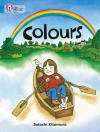‘I wish I′d had this book when I began teaching years ago.’
—Beth Peters, Mathematics Education Consultant
‘An excellent, concise book for novice mathematics teachers, with good ideas for experienced teachers as well.’
—Colleen Martin, Fifth-Grade Teacher
Wilder Waite Grade School, Peoria, IL
Practical support for mathematics instruction—putting it all together, from standards-based instruction to assessment!
Meeting the requirements of teaching mathematics in the current era of accountability can be challenging for any new teacher. Succeeding at Teaching Mathematics, K–6 helps beginning educators focus on the big ideas in teaching mathematics, promote positive engagement in the classroom through practical strategies, and use a variety of methods to assess student understanding.
Teachers will find classroom vignettes that encourage thought-provoking discussions, examples of standards-based activities, and an overview of NCTM content and process standards. Particular attention is given to instructing and assessing English Language Learners, as well as special needs and gifted populations. The authors answer the most pressing questions for novice teachers of mathematics, including how to:
- Develop a philosophy for teaching mathematics
- Design a mathematics curriculum that makes connections within mathematics and across content areas
- Differentiate instructional strategies
- Engage students instead of managing them
This invaluable resource provides the ideal support and guidance to help new teachers get off to a great start!
विषयसूची
Acknowledgments
About the Authors
Introduction
1. A Glimpse at Mathematics Instruction
Two Illustrations
Success in Teaching Mathematics
Summary
2. Standards-Based Teaching
Why Do We Need Standards for Teaching Mathematics?
The National Council of Teachers of Mathematics Principles and Standards
State and District Standards for Teaching Mathematics
The Relationship Between Standards and Standards-Based Mathematics Textbooks
NCTM Curriculum Focal Points
Examples of Standards-Based Activities Involving Algebraic Thinking
Summary
3. Engaging Students in Learning Mathematics
What Is Engagement?
Engaging Learners in the Affective Domain
Affective Issues Related to Teaching and Learning Mathematics
Students Engaged in Learning Probability
Summary
4. Engagement Strategies for Special Populations
The Special Needs Learner
The Gifted Learner
The English Language Learner
Example of Engaging Learners in a Mathematics Classroom
Summary
5. Assessment
Developing Assessments: The Use of Backward Design
Types of Assessment
Rubrics
Grading and Assessment Schemes
Practical Ways of Assessing Throughout the Instructional Process
Tailoring Assessments for Special Populations
Data-Driven Instructional Practices
A Word About Standardized Tests
Summary
6. Putting It All Together
The Year at a Glance: Designing Your Curriculum
Making Connections Within Mathematics
Making Connections Across the Curriculum
Mathematical Connections Across Grades
Succeeding at Teaching Mathematics?and Loving It!
Appendix A
Appendix B
Appendix C
References
Index
लेखक के बारे में
Cheryl D. Roddick is an associate professor in the Department of Mathematics at San José State University. She currently teaches mathematics and mathematics methods courses to students in K-12 education. She also supervises field experiences for student teachers at the secondary level. Roddick’s research interests include the conceptual understanding of fractions and teacher change relative to teaching mathematics. She has presented her research in local as well as national mathematics education conferences. She also facilitates K-12 inservice activities with teachers in local school districts.












